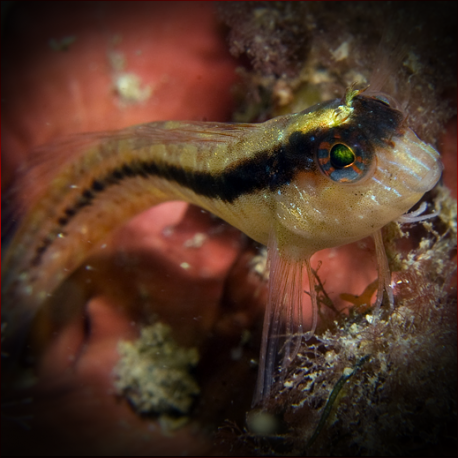More info
Datasheet
| Minimum Tank Size | 300 litres / 79.25 US gallons |
| Maximum Size | 8.0cm / 3.15inches |
| Reef Compatible | Often reef safe |
| Temperament | Might be aggressive towards similar species |
| Temperature | 22.2°C / 71.96°F - 25.6°C / 78.08°F |
| Specific Gravity | 1.020-1.025 |
| Carbonate Hardness | 8-12 |
| pH | 8.1-8.4 |
General Description
Belonging to the Blenniidae family, the Parablennius rouxi, also known as Toothcomb Blennies, are characterized by their oblong shape and long dorsal fin. Typically not growing very large, these fish display a relatively muted coloration but are renowned for their engaging personalities. Some species within the Blenniidae family have small "legs" to aid in moving along the aquarium bottom. Some members exhibit mimicry behavior, akin to Cleaner Wrasses, making identification challenging.
Aquarium Suitability
Suitability: Considered appropriate for specialized aquarium setups, Toothcomb Blennies are known to thrive when kept as the sole representative of their species in an aquarium. They may display aggression towards similar species. Reef Compatibility: Toothcomb Blennies are often considered safe for reef environments due to their diet and behavior.
Care and Hardiness
Toothcomb Blennies fall under the category of having average hardiness. Originating from the Mediterranean Sea, they prefer cooler water temperatures between 18 to 24 degrees Celsius (64 to 75 degrees Fahrenheit). These fish are best suited to tanks with a minimum size of 300 liters.
Aquarium Setup
Maintaining a recommended pH range of 8.1-8.4, a carbonate hardness (KH) of 8-12, and a specific gravity (SG) of 1.020-1.025, Toothcomb Blennies thrive in water conditions with a temperature ranging from 22.2 to 25.6 degrees Celsius. They are primarily herbivores, relying on a diet consisting mainly of microalgae like spirulina. However, some individuals may be trained to accept dry foods.
Behaviour
Toothcomb Blennies exhibit unique behaviors such as grazing on algae found on rocks and glass within the aquarium. Due to their territorial nature, it is advisable to provide ample space for each Blenny to explore and establish its domain.
Feeding and Diet
These fish typically feed on zooplankton like Cyclops and pods. While their primary source of sustenance is algae, some individuals may adapt to consuming dry foods. Ensuring a sufficient algae growth in the tank will enable them to forage for their food naturally.
Habitat and Distribution
Categorically found in the Mediterranean Sea, Toothcomb Blennies inhabit rocky coastal areas where they can actively seek out algae for nourishment. Their distribution and habitat preference underscore the significance of replicating such conditions in a captive setting.
Dimorphism
Toothcomb Blennies may showcase sexual dimorphism, with variations in physical characteristics between male and female individuals. Captive reproduction of these species, if undertaken, demands specific considerations to support their breeding behavior and ensure successful offspring development.

